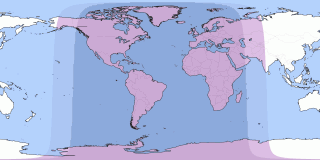Sep 18, 2024 at 2:44 pm
Max View in 89°59'S, 0°00'E
| Global Event: | Partial Lunar Eclipse |
|---|---|
| Local Type: | Partial Lunar Eclipse, in 89°59'S, 0°00'E |
| Begins: | Wed, Sep 18, 2024 at 12:41 pm |
| Maximum: | Wed, Sep 18, 2024 at 2:44 pm 0.085 Magnitude |
| Ends: | Wed, Sep 18, 2024 at 4:47 pm |
| Duration: | 4 hours, 6 minutes | All times shown on this page are local time. |
Eclipses and Transits Visible in 89°59'S, 0°00'E
| Eclipse Visibility From 89°59'S, 0°00'E | Visibility Worldwide | ||
|---|---|---|---|
| Sep 18, 2024 Partial Lunar Eclipse | Partial Lunar Eclipse |  | |
| Oct 3, 2024 Partial Solar Eclipse | Annular Solar Eclipse |  | |
| Sep 8, 2025 Total Lunar Eclipse | Total Lunar Eclipse |  | |
| Sep 22, 2025 Partial Solar Eclipse | Partial Solar Eclipse |  | |
| Feb 17–18, 2026 Partial Solar Eclipse | Annular Solar Eclipse |  | Note: Click on the date link for details in 89°59'S, 0°00'E, or the path map image for global details. Currently shown eclipse is highlighted. |
Next total solar eclipse visible in 89°59'S, 0°00'E
Next annular eclipse visible in 89°59'S, 0°00'E
